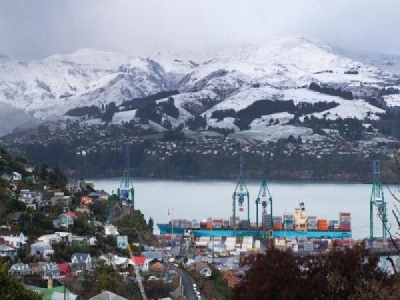
Posted on July 17, 2017
By Charlie Mitchell, stuff
A plan to expand Lyttelton Harbour’s shipping channel has been approved, despite major opposition from iwi on cultural and environmental grounds.
It came with a stern warning, however, over the need to exercise “corporate responsibility” throughout the project.
Lyttelton Port of Christchurch (LPC) has received four resource consents to deepen the Canterbury harbour’s channel, allowing larger ships to enter the port.
The project would cost up to $120 million and be New Zealand’s largest dredging operation.
A deeper channel was required to service larger ships, which were becoming standard worldwide, the company said.
The channel’s length would be doubled to 6.5 kilometres, and be deepened and widened. Sediment would be sucked up and dumped at a disposal site offshore.
A hearings panel led by Sir Graham Panckhurst decided “by a considerable margin” that the consents be granted, but stressed the need for responsibility.
The consents were strenuously opposed by South Island iwi Ngai Tahu, which argued it would threaten the harbour’s marine environment, used for mahinga kai (food gathering).
It argued the consents should be declined unless a net gain in mahinga kai could be assured.
In granting the consents, the panel said that under the law, LPC was required to try increase mahinga kai, but did not have to actually achieve it.
The port must make an honest commitment to do so though, it said.
“LPC as a company must step up, recognise and accept its corporate responsibility to protect and promote the health of Whakaraupo [the harbour] in partnership with Ngai Tahu,” it said.
“Dredging will continue, and so must the commitment regardless of changes in management personnel. Hence a lasting cultural shift is required.”
Although there would be both cultural and environmental effects, the proposed environmental safeguards were “impressive”.
“In our view it is difficult to imagine a more comprehensive set of conditions.”
LPC, which is owned by the Christchurch City Council, cited its environmental monitoring programme as among the most comprehensive in the country.
It included 12 months of baseline monitoring before dredging began, and installation of 14 real-time monitoring stations to monitor water quality.
The hearings process, which was open to public submissions, had been complex and contentious.
Experts commissioned by Ngai Tahu challenged LPC’s modelling, accusing it of under-playing the environmental impacts.
At one point, Ngai Tahu asked the hearings be abandoned until more monitoring work was done.
Tribe elders had spoken of the harbour’s degradation over generations; one said the dredging would leave “a permanent scar” in the harbour.
Under the plan, 18 million cubic metres of sediment would be dredged and dumped out to sea over two years, mostly at a disposal site about 6km from Godley Head.
LPC had a back-up disposal site closer to shore, about 2.25km from Godley Head. It already dumped about 400,000 cubic metres of sediment at that site each year as part of its channel maintenance.
Both dumping sites are within the Banks Peninsula Marine Mammal sanctuary and near the peninsula’s fisheries, where paua, crayfish, mussels, and flatfish are harvested.
Other concerns were raised by surfers, who feared it would affect wave conditions in Sumner.
Ngai Tahu was unable to comment on the decision on Thursday.
The dredging could begin either later this year or early next year. A dredging ship would operate 24 hours a day, seven days a week.
The consents were granted for 35 years.
A $56m berth for cruise ships will open at the port in spring 2019.
Source: stuff





